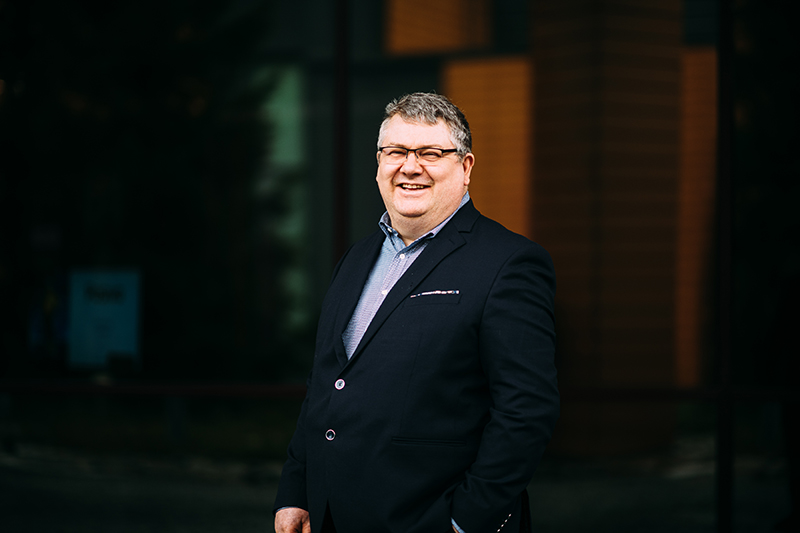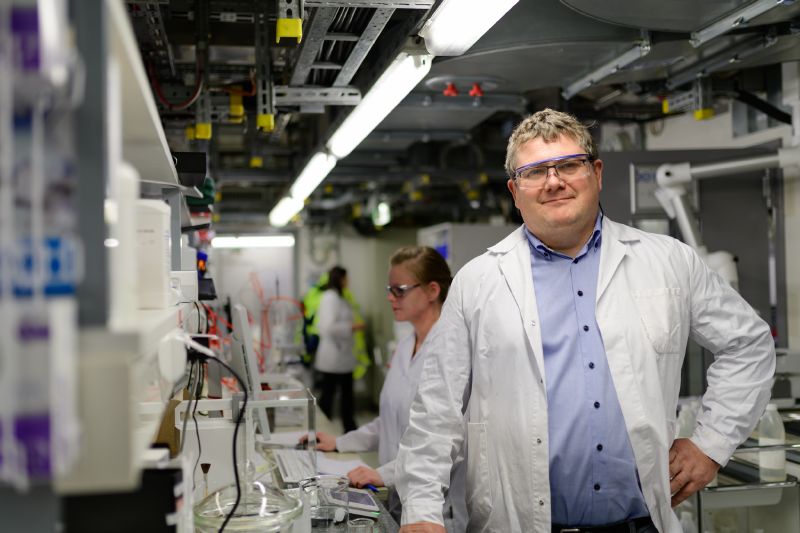The Chief Chemist’s journey into the world of nuclear power
Kimmo Tompuri, the Chief Chemist at the Olkiluoto 3 plant unit, has always enjoyed working with his hands. As his duties changed, Mr Tompuri now scratches this itch by spending time at the summer cabin and working on his boat. But what was it that made a fellow from Southern Finland eat his words and return to the west coast – voluntarily and with pleasure?

The short answer to this would be Olkiluoto 3. However, let us examine the story in more detail and go back to the 80s; to 1987, in fact. That was when Mr Tompuri had his first contact with Satakunta, as he completed his military service at Kuuskajaskari, a fortress island in Rauma. It speaks volumes about his experience there that he swore never to return here once he was done with his military service. His interest in making and doing took Mr Tompuri to Jyväskylä, where he studied natural sciences.
- Chemists work with their hands until they grow old and are promoted to experts, Mr Tompuri says jokingly.
While at university, Mr Tompuri managed to get a summer job at Imatran Voima’s, presently Fortum’s, nuclear power plant in Loviisa.
I was lucky to get the opportunity to do long internships at the power plant. This was not a given in Finland during the recession, and I was probably the only one in our group of students who found a summer job in their own field.
After completing his studies, Mr Tompuri was offered a position at the Loviisa NPP laboratory which was already running nicely. He quickly moved from active laboratory work to quality assurance and material supply as the substitute to the unit supervisor. Interest in the process stayed on his mind, however, and this is when OL3 came into the picture.
It was the spring of 2004 and the decision on the third plant unit to be constructed at Olkiluoto had been made recently.
- I was the youngest of the three chemists at Loviisa with experience in pressurised-water reactors, and when Olkiluoto asked me whether I would be interested in working with the new plant, I didn’t need much time to think about it, Mr Tompuri reminisces.
- The opportunity to be involved in the commissioning of a new plant and to learn more about the industry in the process is the best thing that can happen to a nuclear power plant chemist.
And it has been quite the learning journey. Even though Mr Tompuri brought PWR expertise with him to Olkiluoto, the construction and commissioning of a new type of plant have offered him both challenges and new revelations. As well as an endless number of meetings, emails and new technology, of course. As an added bonus, working at Olkiluoto has taught him about the boiling water reactor (BWR) systems at the OL1 and OL2 plant units; he works for all three plants even though OL3 is “his baby”.
- Learning about different technologies has been interesting, and understanding the BWR systems has also helped us on the PWR side. Knowing both and being able to compare and contrast is useful, Tompuri says.

Most people never even think about how much chemistry is required to run a nuclear power plant. Chemistry is used to maintain appropriate conditions in terms of the amount of radiation and contamination as well as the durability of materials, for example. Phenomena related to chemistry are also used to regulate power, maintain and monitor quality and to produce measurement results for in-house purposes and the authorities. The list is long, and nobody works alone. Chemistry is very much about team work and information sharing. An important part of the job is providing support at the system and component level to engineering and operations personnel.
- If someone calls me or sends me a question by email, I will always reply. Even outside office hours. I am committed to nuclear power and the sense of responsibility is there, 24/7, even though I’m not always at work.
Mr Tompuri’s career at Olkiluoto has taken him from expert, section head and team supervisor to Chief Chemist, and he has also collaborated with other nuclear power plants and international authorities along the way. When looking ahead at his career, Mr Tompuri hopes to learn to understand the behaviour and impacts of the new plant even better. A nuclear power plant is never fully done; you need to keep maintaining and monitoring it and doing preparatory work. He also sees opportunities in training and relaying information. When you have accumulated a lot of knowledge, sharing it with others is also a pleasant experience – both here at Olkiluoto and internationally. At the same time, you get to maintain your own competence and experience new things yourself.
And as regards working with hands, the summer cabin at Uusikaupunki offers plenty of opportunities for that. Should he have any time left from working on the cabin and sailboat, the old fly-fisher hopes one day to learn to catch fish at sea.
Yes, the sea. It is an important part of our everyday lives and has a strong presence here at Olkiluoto.
Text: Johanna Innola
Photos: Tapani Karjanlahti
Share